Dissolved organic matter (DOM) as natural tracking agent in cyclic steam stimulation with preformed foams: a mature heavy oil field case
Abstract
The object of this paper was to analyze the non-volatile watersoluble fraction or dissolved organic matter (DOM) from production water associated with Cyclic Steam Stimulation (CSS) with preformed foams through high and ultra-high mass spectrometry. Using ESI FT-ICR MS, six naphthenic acids were identified and selected as new potential natural tracking agents. Subsequently, the DOM fractions were analyzed via ESI MSMS, through which semi-quantitative concentrations of these compounds were established for the samples. The results show that the DOM concentration monitored through ESI-MSMS allows for the correlation of changes during the cycles of steam+foam injection with the increases/decreases of oil production in three wells from the Cocorná Field, Colombia. This information becomes relevant for quality control of cyclic steam injection and, hence, for developing heavy oil mature fields. Thus, monitoring water-soluble petroleum compounds is presented as an affordable strategy and a promising tool to track changes in reservoirs subjected to water injection.
References
Aeppli, C., Carmichael, C. A., Nelson, R. K., Lemkau, K. L., Graham, W. M., Redmond, M. C., ... & Reddy, C. M. (2012). Oil weathering after the Deepwater Horizon disaster led to the formation of oxygenated residues. Environmental science & technology, 46(16), 8799-8807. https://doi.org/10.1021/es3015138
Ajaero, C., Vander Meulen, I., Heshka, N. E., Xin, Q., McMartin, D. W., Peru, K. M., ... & Headley, J. V. (2024). Evaluations of Weathering of Polar and Nonpolar Petroleum Components in a Simulated Freshwater–Oil Spill by Orbitrap and Fourier Transform Ion Cyclotron Resonance Mass Spectrometry. Energy & Fuels, 38(8), 6753-6763. https://doi.org/10.1021/acs.energyfuels.3c04994
Bertheussen, A., Simon, S., & Sjöblom, J. (2018). Equilibrium partitioning of naphthenic acid mixture Part 2: crude oil-extracted naphthenic acids. Energy & Fuels, 32(9), 9142-9158. https://doi.org/10.1021/acs.energyfuels.8b01870
Brown, T. L., & Rice, J. A. (2000). Effect of experimental parameters on the ESI FT-ICR mass spectrum of fulvic acid. Analytical Chemistry, 72(2), 384-390. https://doi.org/10.1021/ac9902087
Derenne, S., & Tu, T. T. N. (2014). Characterizing the molecular structure of organic matter from natural environments: An analytical challenge. Comptes Rendus Geoscience, 346(3-4), 53-63. https://doi.org/10.1016/j.crte.2014.02.005
Dittmar, T., Koch, B., Hertkorn, N., & Kattner, G. (2008). A simple and efficient method for the solid‐phase extraction of dissolved organic matter (SPE‐DOM) from seawater. Limnology and Oceanography: Methods, 6(6), 230-235. https://doi.org/10.4319/lom.2008.6.230
Ghassal, B. I. (2019). Reservoir connectivity, water washing and oil to oil correlation: An integrated geochemical & petroleum engineering approach. SPE Middle East Oil and Gas Show and Conference, MEOS, Proceedings, 2019-March. https://doi.org/10.2118/194957-MS
Leenheer, Gonsior, M., Zwartjes, M., Cooper, W. J., Song, W., Ishida, K. P., Tseng, L. Y., ... & Schmitt-Kopplin, P. (2011). Molecular characterization of effluent organic matter identified by ultrahigh resolution mass spectrometry. Water research, 45(9), 2943-2953. https://doi.org/10.1016/j.watres.2011.03.016
Hatcher, P. G., Dria, K. J., Kim, S., & Frazier, S. W. (2001). Modern analytical studies of humic substances. Soil Science, 166(11), 770–794. https://doi.org/10.1097/00010694-200111000-00005
Hindle, R., Noestheden, M., Peru, K., & Headley, J. (2013). Quantitative analysis of naphthenic acids in water by liquid chromatography-accurate mass time-of-flight mass spectrometry. Journal of Chromatography A, 1286, 166–174. https://doi.org/10.1016/j.chroma.2013.02.082
Jones, D. M., Watson, J. S., Meredith, W., Chen, M., & Bennett, B. (2001). Determination of naphthenic acids in crude oils using nonaqueous ion exchange solid-phase extraction. Analytical Chemistry, 73(3), 703-707. https://doi.org/10.1021/ac000621a
Leenheer, J. A., & Croué, J. P. (2003). Peer reviewed: characterizing aquatic dissolved organic matter. Environmental science & technology, 37(1), 18A-26A. https://doi.org/10.1021/es032333c
Leenheer, J. A., & Croué, J. P. (2003). Peer reviewed: characterizing aquatic dissolved organic matter. Environmental science & technology, 37(1), 18A-26A. https://doi.org/10.1021/es032333c
Liu, Y., & Kujawinski, E. B. (2015). Chemical composition and potential environmental impacts of water-soluble polar crude oil components inferred from ESI FT-ICR MS. PloS one, 10(9), e0136376. https://doi.org/10.1371/journal.pone.0136376
Maddinelli, G., Bartosek, M., Bonoldi, L., Moghadasi, L., Renna, D., & Moscatelli, D. (2022, October). Parameter Sensitive Inter-Well Tracers to Map Reservoir Conditions. In Abu Dhabi International Petroleum Exhibition and Conference (p. D012S140R002). SPE. https://doi.org/10.2118/211220-MS
McCormack, P., Jones, P., Hetheridge, M. J., & Rowland, S. J. (2001). Analysis of oilfield produced waters and production chemicals by electrospray ionisation multi-stage mass spectrometry (ESI-MSn). Water research, 35(15), 3567-3578. https://doi.org/10.1016/S0043-1354(01)00070-7
Osma, L., García, L., Pérez, R., Barbosa, C., Botett, J., Sandoval, J., & Manrique, E. (2019). Benefit–cost and energy efficiency index to support the screening of hybrid cyclic steam stimulation methods. Energies, 12(24), 4631. https://doi.org/10.3390/en12244631
Pérez, R. A., Rodréguez, H. A., Rendón, G. J., Plata, B. G., Salinas, L. M., Barbosa, C., ... & Manrique, E. J. (2022, April). Optimizing Production Performance, Energy Efficiency and Carbon Intensity with Preformed Foams in Cyclic Steam Stimulation in a Mature Heavy Oil Field: Pilot Results and Development Plans. In SPE Improved Oil Recovery Conference? (p. D011S011R002). SPE. https://doi.org/10.2118/209399-MS
Perez, R. A., Rodriguez, H. A., Romero, J. E., Alvarez, J. S., Hernandez, S., Luque, I., ... & Manrique, E. (2023, June). Incorporating Hybrid Technology of CSS+ Foam in Heavy Oil Field Development Plans: Practical Experiences and Lessons Learned. In SPE Latin America and Caribbean Petroleum Engineering Conference (p. D021S009R001). SPE. https://doi.org/10.2118/213199-MS
Perez, R., Rodriguez, H., Barbosa, C., Manrique, E., Garcia, L., & Rendon, G. (2020, July). Improving CSS Performance with Preformed Foam: Teca-Cocorna Field Case. In SPE Latin America and Caribbean Petroleum Engineering Conference (p. D011S002R001). SPE. https://doi.org/10.2118/199104-MS
Pérez-Romero, R. A., García-Duarte, H. A., Osma-Marín, L. Y., Barbosa-Goldstein, C., Garcia-Rodriguez, L. E., Botett-Cervantes, J. A., ... & Manrique-Ventura, E. J. (2020). Downhole heating and hybrid cyclic steam methods: Evaluating technologies from the laboratory to the field. CT&F-Ciencia, Tecnología y Futuro, 10(2), 49-60. https://doi.org/10.29047/01225383.257
Reyes, T. G., & Crisosto, J. M. (2016). Characterization of dissolved organic matter in river water by conventional methods and direct sample analysis‐time of flight‐mass spectrometry. Journal of Chemistry, 2016(1), 1537370. https://doi.org/10.1155/2016/1537370
Rowland, S. J., Scarlett, A. G., Jones, D., West, C. E., & Frank, R. A. (2011). Diamonds in the rough: identification of individual naphthenic acids in oil sands process water. Environmental Science & Technology, 45(7), 3154-3159. https://doi.org/10.1021/es103721b
Rudzinski, W. E., Oehlers, L., Zhang, Y., & Najera, B. (2002). Tandem mass spectrometric characterization of commercial naphthenic acids and a Maya crude oil. Energy & Fuels, 16(5), 1178-1185. https://doi.org/10.1021/ef020013t
Sequera-Dalton, B. M., Gutiérrez, D., Moore, R. G., Mehta, S. A., Ursenbach, M. G., García, H. A., ... & Manrique, E. J. (2024, March). New Insights From an Old Method After History Matching a Newly Designed 1-D Cyclic Steam Stimulation Experiment. In SPE Canadian Energy Technology Conference (p. D011S001R001). SPE. https://doi.org/10.2118/218041-MS
Villabona-Estupiñan, S., Rojas-Ruiz, F. A., Pinto-Camargo, J. L., Manrique, E. J., & Orrego-Ruiz, J. A. (2020). Characterization of Petroleum Compounds Adsorbed on Solids by Infrared Spectroscopy and Mass Spectrometry. Energy & Fuels, 34(5), 5317-5330. https://doi.org/10.1021/acs.energyfuels.9b03564
Shang, D., Kim, M., Haberl, M., & Legzdins, A. (2013). Development of a rapid liquid chromatography tandem mass spectrometry method for screening of trace naphthenic acids in aqueous environments. Journal of Chromatography A, 1278, 98–107. https://doi.org/10.1016/j.chroma.2012.12.078
Sleighter, R. L., & Hatcher, P. G. (2007). The application of electrospray ionization coupled to ultrahigh resolution mass spectrometry for the molecular characterization of natural organic matter. Journal of Mass Spectrometry, 42(5), 559–574. https://doi.org/10.1002/jms.1221
Sørensen, L., Størseth, T. R., Altin, D., Nordtug, T., Faksness, L. G., & Hansen, B. H. (2024). A simple protocol for estimating the acute toxicity of unresolved polar compounds from field-weathered oils. Toxicology Mechanisms and Methods, 34(3), 245–255. https://doi.org/10.1080/15376516.2024.2310003
Stanford, L.A., Kim, S., Klein, G.C., Smith, D.F., Rodgers, R.P. and Marshall, A. G. (2007). Identification of Water-Soluble Heavy Crude Oil Organic-Acids, Bases, and Neutrals by Electrospray Ionization and Field Desorption Ionization Fourier Transform Ion Cyclotron Resonance Mass Spectrometry. Environmental Science and Technology, 41, 2696–2702. https://doi.org/10.1021/es0624063
Thomas, K. V., Langford, K., Petersen, K., Smith, A. J., & Tollefsen, K. E. (2009). Effect-directed identification of naphthenic acids as important in vitro xeno-estrogens and anti-androgens in North Sea offshore produced water discharges. Environmental Science and Technology, 43(21), 8066–8071. https://doi.org/10.1021/es9014212
Venancio, F., Oliveira, A., Silva, S. C., Kina, A. Y., & Mutch, K. (2024, March). Evaluating New Chemical Treatments to Decrease Water Soluble Organic (WSO) Content from Produced Water Discharge. In SPE Water Lifecycle Management Conference and Exhibition (p. D011S005R003). SPE. https://doi.org/10.2118/218979-MS
Wang, G., Xue, Y., Wang, D., Shi, S., Grice, K., & Greenwood, P. F. (2016). Biodegradation and water washing within a series of petroleum reservoirs of the Panyu Oil Field. Organic Geochemistry, 96, 65-76. https://doi.org/10.1016/j.orggeochem.2016.03.009
Yildiz, H. O., & Morrow, N. R. (1996). Effect of brine composition on recovery of Moutray crude oil by waterflooding. Journal of Petroleum science and Engineering, 14(3-4), 159-168. https://doi.org/10.1016/0920-4105(95)00041-0
Zheng, F., Shi, Q., Vallverdu, G. S., Giusti, P., & Bouyssiere, B. (2020). Fractionation and characterization of petroleum asphaltene: focus on metalopetroleomics. Processes, 8(11), 1504. https://doi.org/10.3390/pr8111504
Zito, P., Ghannam, R., Bekins, B. A., & Podgorski, D. C. (2019). Examining the extraction efficiency of petroleum‐derived dissolved organic matter in contaminated groundwater plumes. Groundwater Monitoring & Remediation, 39(4), 25-31. https://doi.org/10.1111/gwmr.12349
Downloads
Copyright (c) 2024 CT&F - Ciencia, Tecnología y Futuro

This work is licensed under a Creative Commons Attribution-NonCommercial-ShareAlike 4.0 International License.

| Article metrics | |
|---|---|
| Abstract views | |
| Galley vies | |
| PDF Views | |
| HTML views | |
| Other views | |











